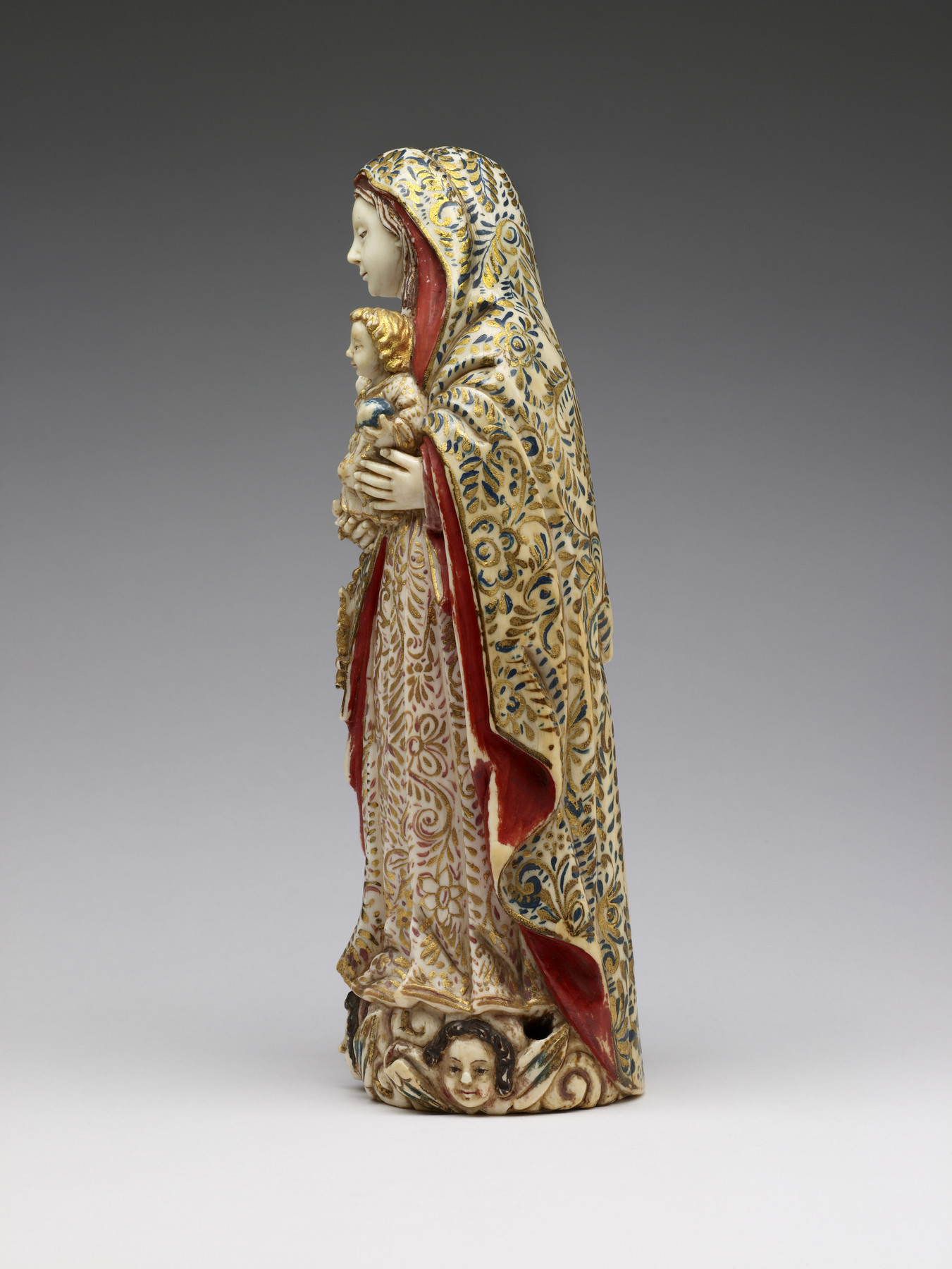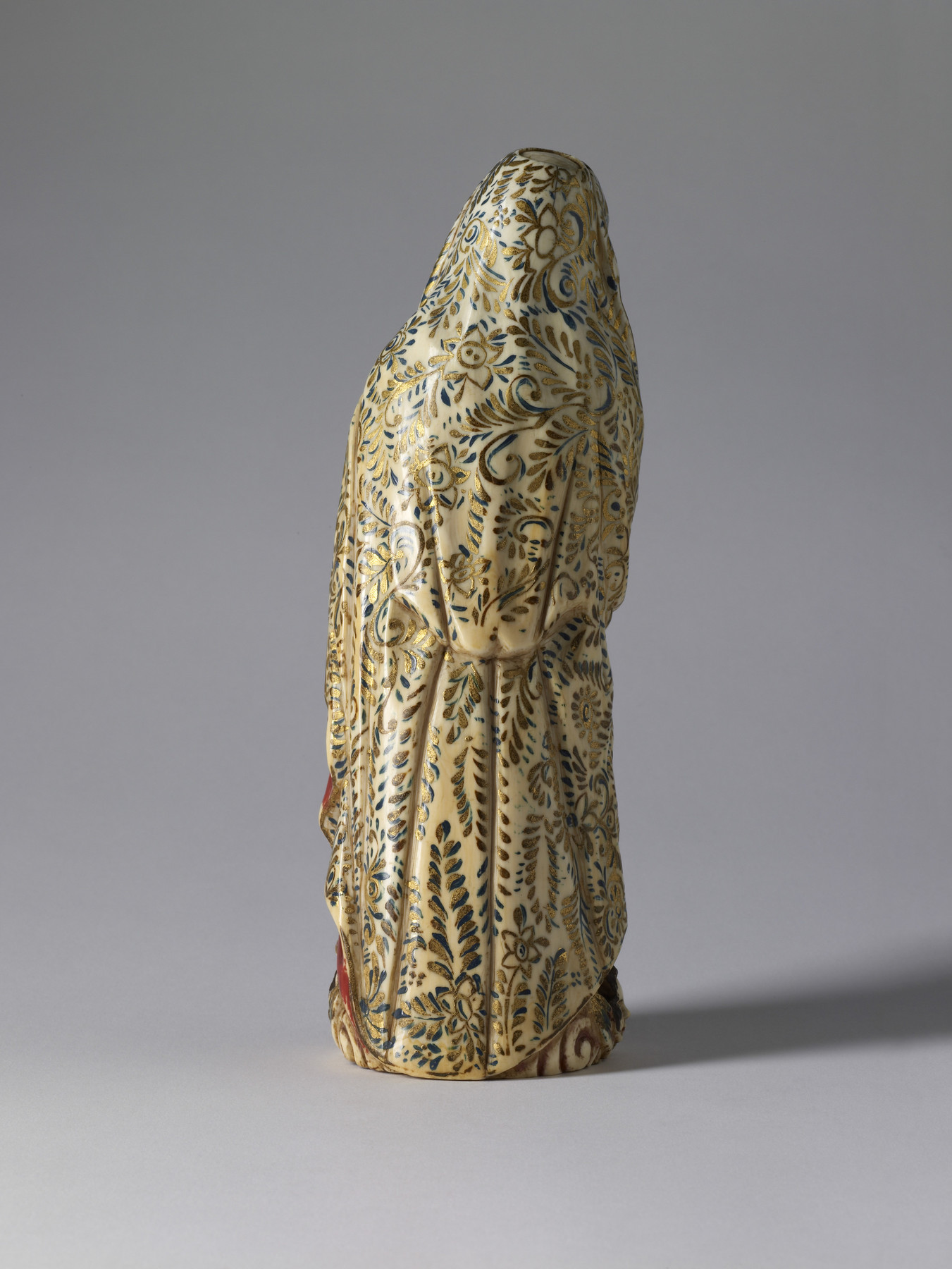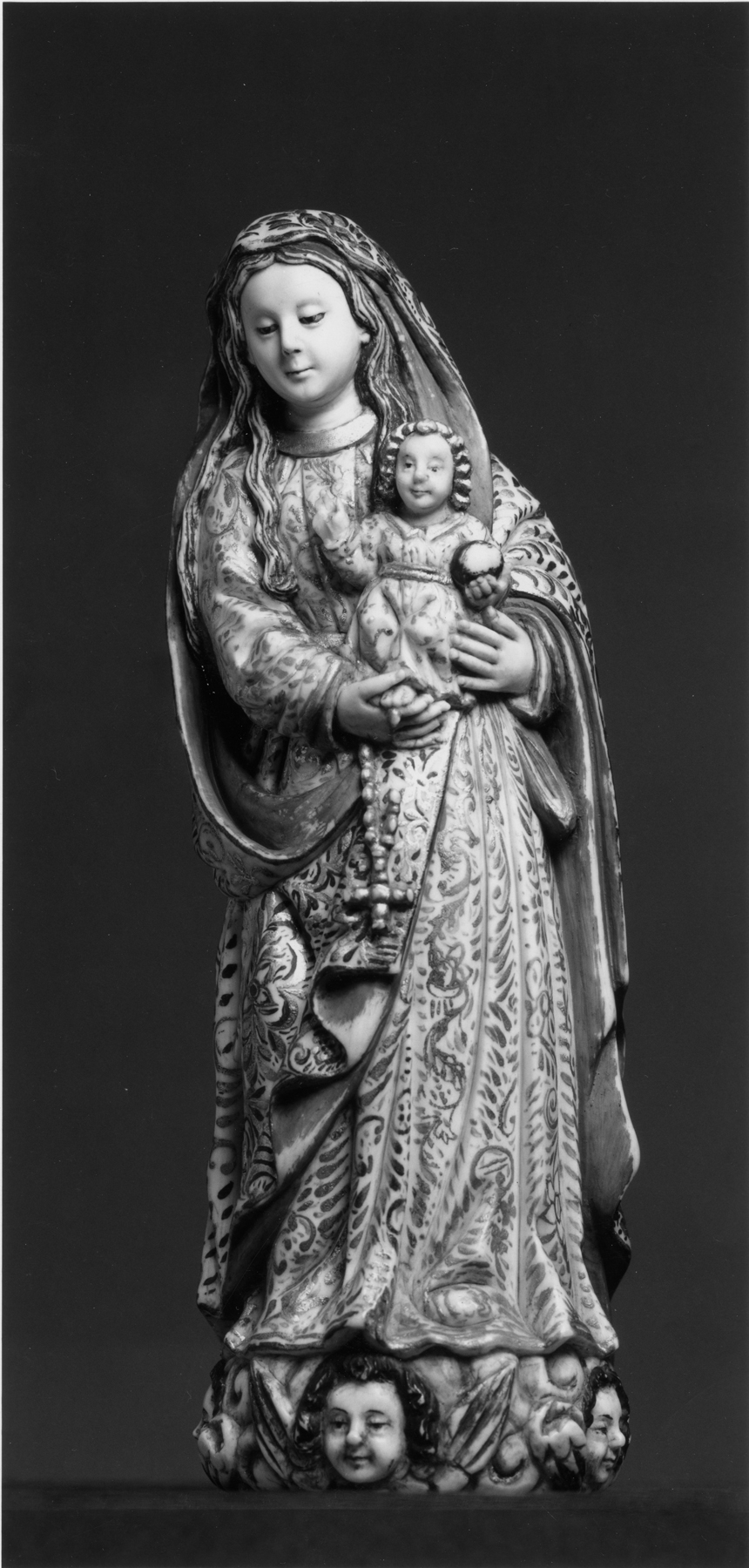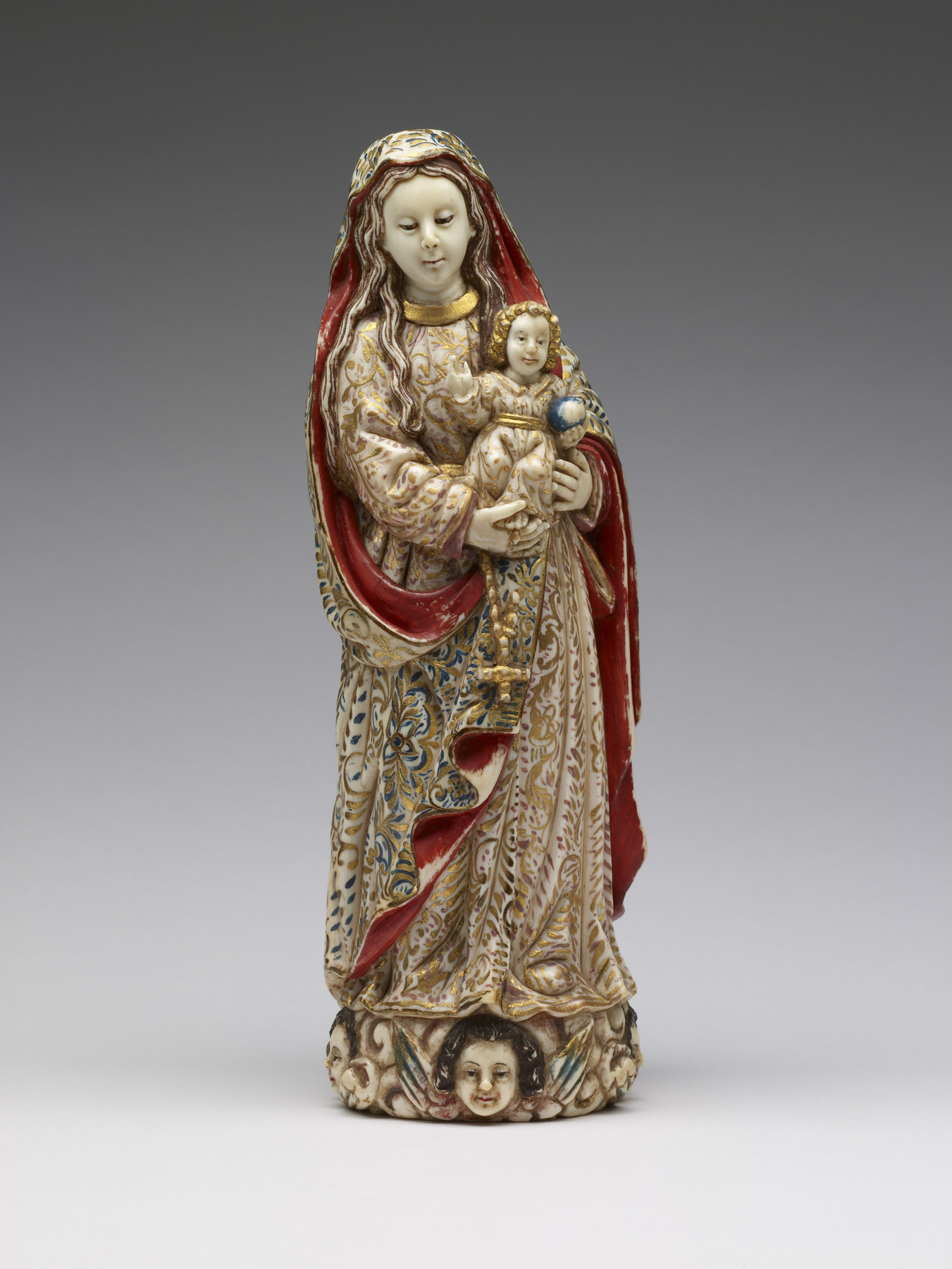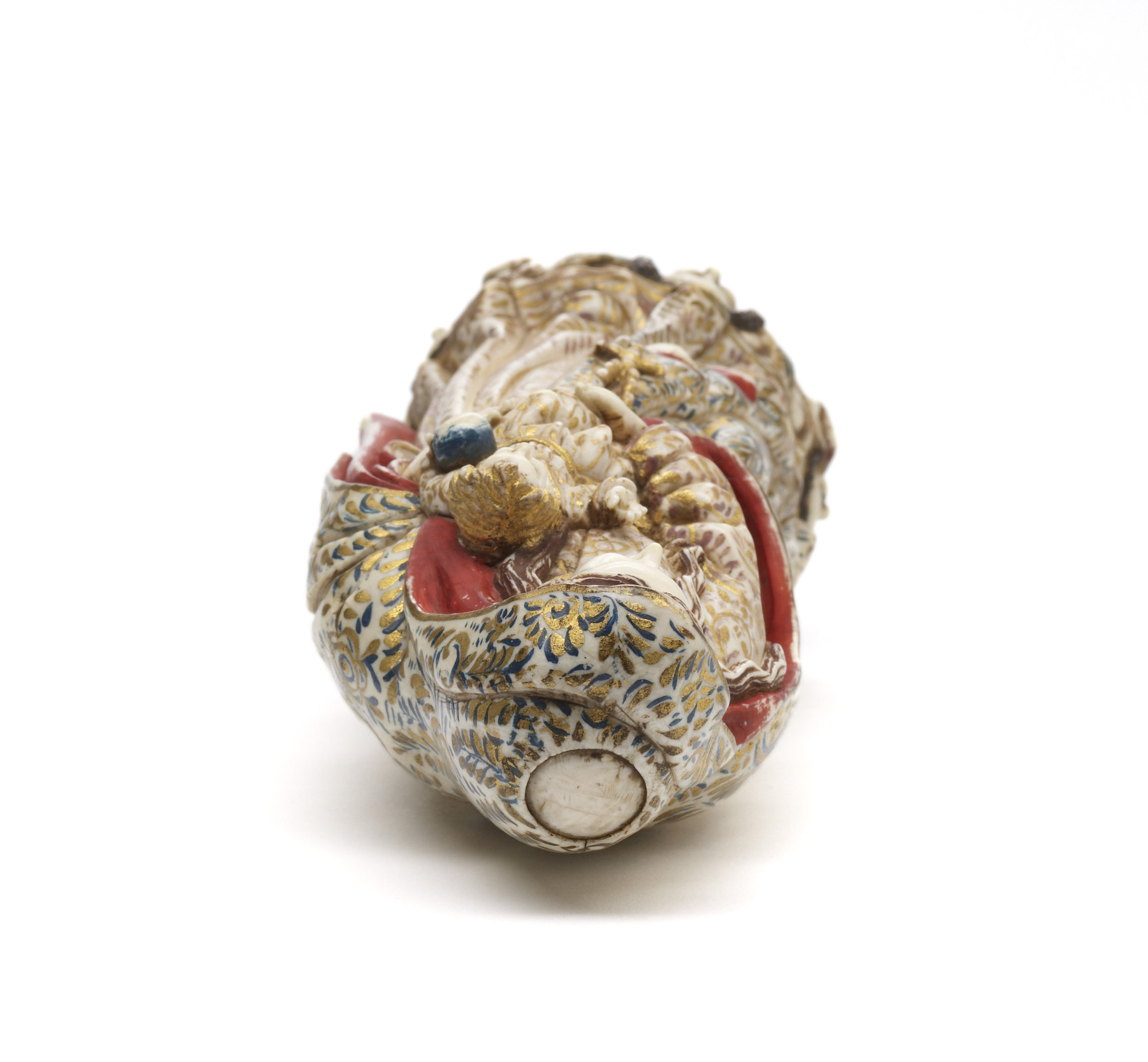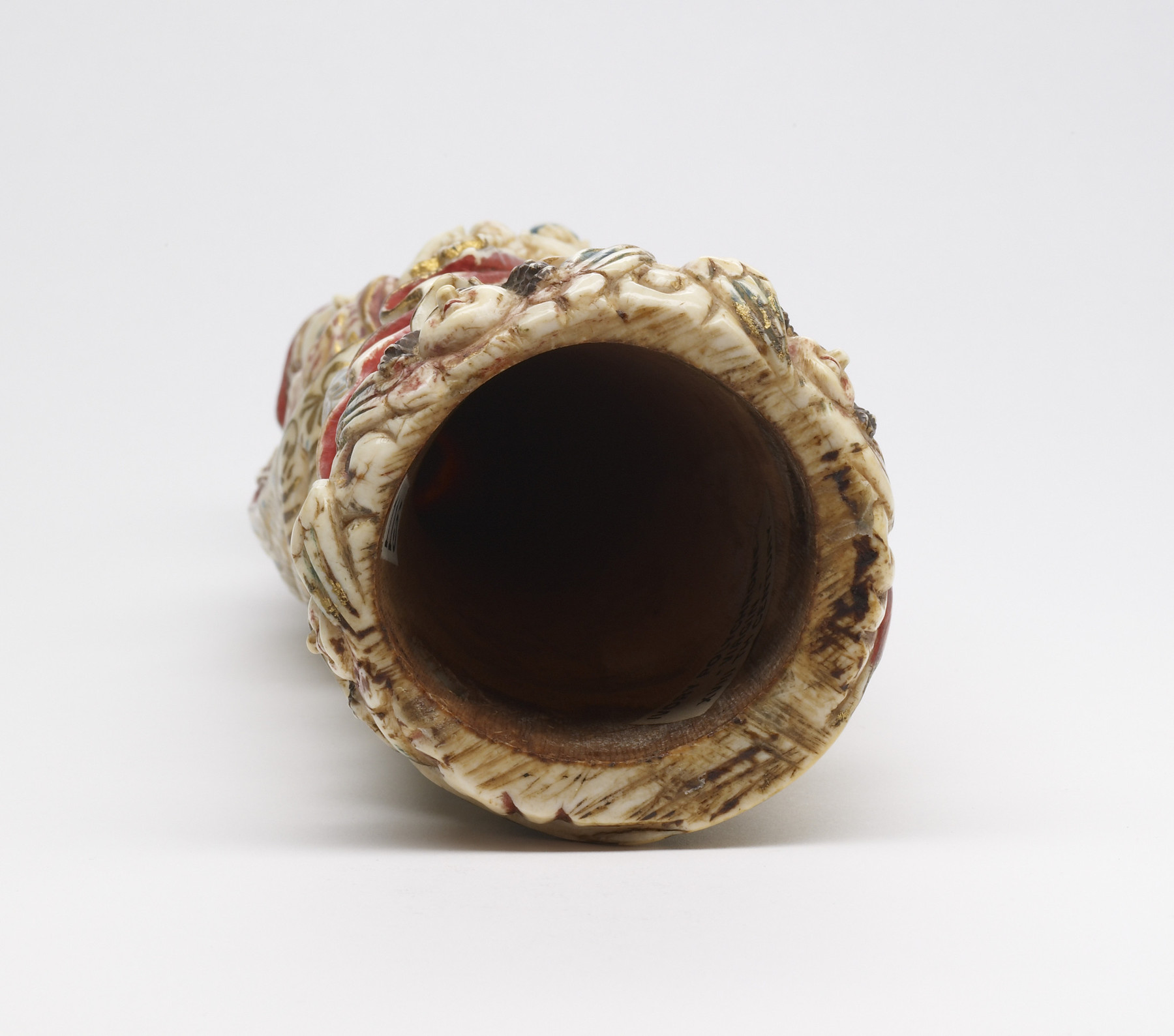Our Lady of the Rosary
The Virgin is supported by cherubim and stylized clouds and supports the Christ Child in her arms. She carries a rosary in her right hand while Christ holds an orb in one hand, signifying sovereignty over the world, raising the other in blessing. The painted decoration, chiefly of the rich clothing (imitating brocade) of the Virgin and Christ Child, is original and would contriubte to impression of royal status of the mother and child.
This approach to surface decoration, entirely characteristic of ivory devotional statuettes carved in the Philippines in the 1600s, is thought by specialists in the field to reflect the presence in the Philippines of larger-scale devotional sculpture by Martínez Montañés (1568-1649), a sculptor in Seville, Spain's primary port for trade with its world-wide network of colonies. In contrast, the Virgin's face with its heavy-leaded eyes, reflects more closely a sensibility associated with Chinese carving. For the importance of Chinese artisans in the Philippines, see Walters 71.490.
For a devotional statuette of the Virgin and Child carved in the Philippines that appears to be more closely reflective of Chinese traditions of carving, see Walters 71.358.
Provenance
Provenance (from the French provenir, 'to come from/forth') is the chronology of the ownership, custody, or location of a historical object. Learn more about provenance at the Walters.
Henry Walters, Baltimore [date and mode of acquisition unknown]; Walters Art Museum, 1931, by bequest.
Geographies
Philippines (Place of Origin)
Measurements
H: 9 5/16 in. (23.6 cm)
Credit Line
Acquired by Henry Walters
Location in Museum
Accession Number
In libraries, galleries, museums, and archives, an accession number is a unique identifier assigned to each object in the collection.
In libraries, galleries, museums, and archives, an accession number is a unique identifier assigned to each object in the collection.
71.322



